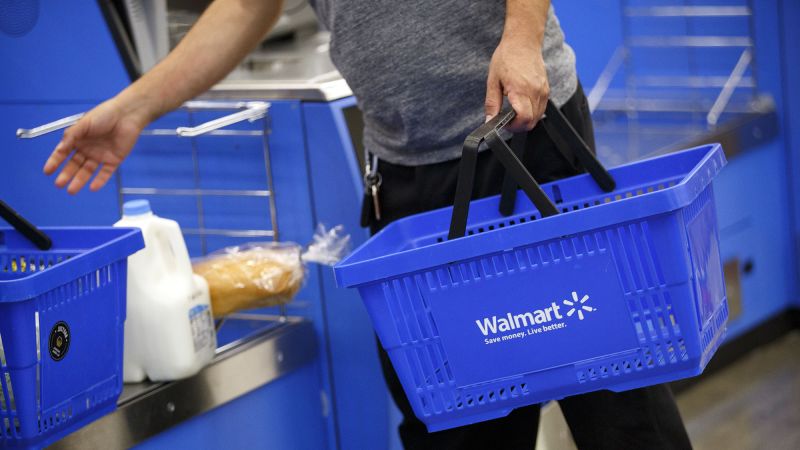The backlash against self-checkout is growing, and stores are starting to dial back on the technology after it exploded over the past few years.
Booths, a British supermarket chain, said it’s removing self-checkout stations in all but two of its 28 stores. In the United States, Walmart, Costco, Wegmans and other chains have also revised their self-checkout strategies.
“Our customers have told us this over time — that the self-scan machines that we’ve got in our stores … can be slow, they can be unreliable (and) they’re obviously impersonal,” Booths managing director Nigel Murray told the BBC.
Customers at Booths also frequently misidentified which fruits and vegetables they were buying when prompted by self-checkout machines. Alcohol purchases also were not smooth transactions through self-checkout because employees had to verify customers’ ages.
“Some customers don’t know one different apple versus another, for example,” Murray said. “There’s all sorts of fussing about with that and then the minute you put any alcohol in your basket somebody’s got to come and check that you’re of the right age.”
A spokesperson for Booths told CNN that employees checking out shoppers was a better customer experience.
Self-service machines were first introduced during the 1980s to lower labor expenses. They shifted the work of paid employees to unpaid customers.
Self-checkout expanded at supermarkets in the early 2000s as stores looked to cut costs, and during the pandemic, many shoppers used self-checkout for the first time to minimize close interaction with employees and other customers.
But now, retailers are rethinking self-checkout. They have found that self-checkout leads to higher merchandise losses from customer errors and intentional shoplifting — known as “shrink” — than human cashiers ringing up customers.
Shrink has been a growing problem for retailers, who have blamed shoplifting for the increase and called for tougher penalties. But retailers’ self-checkout strategies have also contributed to their shrink problems.
One study of retailers in the United States, Britain and other European countries found that companies with self-checkout lanes and apps had a loss rate of about 4%, more than double the industry average.
Some products have multiple barcodes or barcodes that don’t scan properly with self-checkout technology. Produce, including fruit and meat, typically needs to be weighed and manually entered into the system using a code. Customers may type in the wrong code by accident. Other times shoppers won’t hear the “beep” confirming an item has been scanned properly.

Other customers take advantage of the lax oversight at self-checkout aisles and have developed techniques for stealing. Common tactics include not scanning an item, swapping a cheaper item (bananas) for a more expensive one (steak), scanning counterfeit barcodes attached to their wrists or properly scanning everything and then walking out without paying.
Stores have tried to limit losses by tightening self-checkout security features, such as adding weight sensors. But additional anti-theft measures also lead to more frustrating “unexpected item in the bagging area” errors, requiring employees to intervene.
Walmart removed self-checkout machines at some stores in New Mexico earlier this year. ShopRite pulled them at a Delaware store after customer complaints. Wegmans last year ended a mobile app that allowed customers to scan, bag and pay for groceries while they shopped after reporting losses. Costco said it’s adding more staff in self-checkout areas after it found that non-members were sneaking in to use membership cards that didn’t belong to them at self-checkout.
Costco management said this year that shrink increased “in part we believe due to the rollout of self-checkout.”
Five Below, the discount toy retailer, said that shrink at stores with more self-checkout lanes was higher. The company plans to increase the number of staffed cash registers in new locations.
Read the full article here








